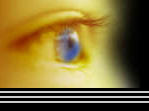Students pair up giving one student
the blindfold or earplugs, or both. While the students are performing
the tasks, the other student is instructed to watch those that are participating and note how the students are taking to the
task keeping in mind the questions : Are they hanging on to the wall for guidance? Are they using their sense of touch more or less? Can they walk in a straight line?
(Each student must have a partner so they do not hurt themselves. The other partner is NOT to talk to the person who is blindfolded.
They are all on their own.)
Allow students to walk the halls of the school and assign tasks for them to complete.
Each person that is sensory “deprived” must drink from a water fountain, find a specific teacher’s room,
make a phone call, find the cafeteria, and walk up and down one flight of stairs. When
each student returns, they will immediately journal their thoughts about the ease or difficulty of the task and their feelings
related to the activity. They must then pick one comment to write on the board
on a large chart will be on the board. The columns include: Which task was easy?
Which task was hard? Did their other senses become more alert?
La actividad para la Sensación y la
Percepción
En una actividad de descubrimiento acerca
de sentido y percepción, los estudiantes ganarán una comprensión más grande de cómo nosotros, como una sociedad, es condicionada
al procesamiento información de los sentidos que la capacidad es a menudo da por sentado.
Los estudiantes forman pareja le dar
a un estudiante la venda o los tapones para el oídos, o los dos. Mientras los estudiantes realizan las tareas, el otro estudiante
es instruido para mirar ésos que participan y notan cómo los estudiantes toman a la tarea que teniendo presente las preguntas:
¿Cuelgan ellos en a la pared para la guía? ¿Utilizan ellos su sentido del tacto más o menos? ¿Pueden andar ellos en una línea
recta? (Cada estudiante debe tener a un socio tan ellos no duelen a sí mismo. El otro socio es de no hablar con la persona
que está con los ojos vendados. Ellos son todo en su propio).
Permita a estudiantes para andar los
vestíbulos de la escuela y asignar tareas para ellos completar. Cada persona que es sensoria "privado" debe beber de una fuente
de agua, encontrar el cuarto de un maestro específico, hacer una llamada telefónica, encontrar el restaurante, y subir y abajo
un vuelo de escalera. Cuándo cada regresos de estudiante, ellos hacen inmediatamente diario que sus pensamientos acerca de
la facilidad o la dificultad de la tarea y sus sentimientos relacionaron a la actividad. Ellos entonces deben escoger un comentario
a escribir en la tabla en un gráfico grande estará en la tabla. Las columnas incluyen: ¿Cuál tarea fue fácil? ¿Cuál tarea
fue dura? ¿Hizo sus otros sentidos llegan a ser más alarma?

